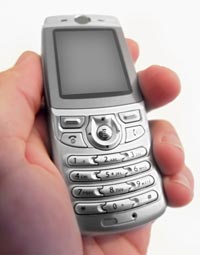Recycled Copper Keeps Its Value
 Electronic items like cell phones and computers should never be put out with the regular trash. Instead, contact your municipality; many offer collection dates when e-waste will be accepted.
Electronic items like cell phones and computers should never be put out with the regular trash. Instead, contact your municipality; many offer collection dates when e-waste will be accepted.High-resolution version of this photo.
Since the discovery of copper about 10,000 years ago, mankind has never ceased to find innovative applications for this infinitely useful element that is easily melted and re-used.
Who knows, maybe copper from one of the tools used to smooth the stones on the great pyramids in Egypt is still in circulation today. It's quite likely that much of the 700 billion pounds of copper mined worldwide to date is still in use.
With the highest recycling rate of any engineering metal, copper rarely ends up in a landfill - it's just too valuable. Altogether, 1.5 million tons of scrap copper was recycled in the USA last year, according to the Institute of Scrap Recycling Industries. This is a savings of 85 percent of the energy that would have been required to produce new copper from ore.
Discarded electrical wiring, plumbing tube, cartridge cases from the military and automobile radiators are some of the main sources for reclaimed copper today.
These products are sold to brass mills, copper mills and refineries to be melted down and recast into new products. In the USA, about 66 percent (78.4 million tons) of all primary copper consumed since 1864 has been returned and reused as scrap.
Man has been recycling copper throughout history. During the Middle Ages, which saw frequent conflicts, bronze (an alloy of copper and tin) cannons were typically melted down after each war and made into more useful items.
During more modern military crises, like the Vietnam conflict and Operation Desert Storm, the increased use of ammunition results in more than a doubling of the usual amount of copper that's reclaimed from cartridge brass (an alloy of copper and zinc).
The home is another source of products made from recycled copper. For example, copper architectural and plumbing products typically contain from 60 to 90 percent scrap.
Homeowners renovating their homes would be wise to remember that all copper products - no matter what age or condition - are still valuable and should not be thrown away. Check around, you'll never find a piece of scrap copper on a construction site.
Anyone with an old appliance that still has some life in it, or decorative objects made from copper, or even used or unused copper plumbing tube - might consider donating it to a local Habitat for Humanity retail store. Found in 28 states, these stores sell discounted home items to the public and use the proceeds to support the group's mission to build new homes for the needy.
Because old electronics have components that may be harmful to the environment, they should not be put out with the regular trash. Many municipalities have implemented "e-waste" programs that can separate out these components and enable the recapture of copper used in wiring and circuit boards and return the copper for re-use.
While there is no federal policy to date on recycling electronic waste, individual cities and states have instituted mandatory and voluntary recycling programs. In California, consumer fees of up to $10 on purchases of new electronic products are applied to the proper disposal of older electronic items.
More information on recycling copper is available at our Environment section. Cu
Resources:
Also in this Issue:
- Recycled Copper Keeps Its Value
- Got Hot Water?
- Preventing Waterborne Disease
- Copper Joins Fight Against Terrorism
